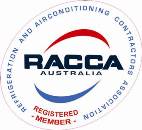Australia’s national science agency, CSIRO, has conducted new research that shows new Australian homes are up to 50% more airtight than those tested in 2015. Homeowners will benefit from this since apartments and homes that meet code requirements for air tightness have better indoor air quality, lower energy costs, and more comfort.
Air tightness stops unwanted air movements from occurring inside a building, keeping inside air from escaping and outside air from entering. Draughts from inadequate air tightness can raise energy costs by up to 20%. On the other hand, excessively airtight homes without controlled ventilation can result in mold growth, condensation, and health problems for occupants like headaches and nausea from elevated levels of carbon dioxide and monoxide.
A total of 233 apartments and detached homes constructed in Melbourne, Sydney, Canberra, Brisbane, and Adelaide during the previous four years were tested by researchers. Specially designed airtight homes were not included.
The report outlined a range of recommendations for Australian building codes to address common air tightness issues, including:
- establishing air tightness standards in the National Construction Code (NCC)
- requiring controlled ventilation in new buildings, particularly apartments to reduce indoor pollutants and moisture
- making air barriers, such as building wraps mandatory in all new residences
- providing on-site training and educational resources to connect builders with cost-effective solutions that improve building performance
This info was provided courtesy of CSIRO webpage and was slightly edited prior to publication.
For more info, click here



